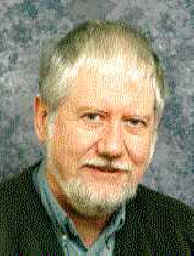![]()
![]()

D. Phillip Woodruff
President - IUVSTA
(1998-2001) Triennium
Dear Colleagues,
Writing this message at end of 1999 I am conscious that I should be making some profound statements about the new millennium and its impact on IUVSTA. I confess, however, to some cynicism in such matters; even if one accepts that 1st January 2000 is the beginning of the new millennium, why should this trick of the calendar be so significant? As practicing scientists or other individuals working with the latest developments in science, we are also only too well aware of the dangers of trying to predict the future on the scale of a few years, let alone a millennium.
Of course, any key date in the calendar is commonly taken as a good point to take stock. Even if we do not make serious New Year Resolutions, we may well be obliged to deal with year-end issues of a fiscal character. On a one-year cycle, at least, any organization needs to look back to the lessons of the past and forward to the short-term plans for the future. Even if a millennium is well beyond the human time scale of a generation or a lifetime (and certainly beyond the current lifetime of IUVSTA!), a century comes a little closer to these time scales. In fact, IUVSTA has, in effect, just passed its 40th anniversary – somewhat less than its half-century. The Union has its origins in a meeting held in Namur, Belgium, in June 1958 at a gathering entitled (in English) the First International Congress for the Study of Vacuum Techniques, and led to the formation of a body called the International Organization for Vacuum Science and Technology. The IOVST was transformed into the IUVSTA four years latter at another meeting in Belgium (Brussels) in December 1962. In fact our next Executive Council Meeting of IUVSTA will be held in Namur in March 2000, and a special session of lectures on these early beginnings with some of the founder members present will allow time for just the kind of reflection which the end of a century is supposed to encourage. 2000 might also be seen a pragmatic 40th anniversary – of the date midway between the foundation of IUVSTA itself and of its predecessor IOVST!
The growth of the societies and the underlying community which IUVSTA represents over this period of around 40 years has certainly been spectacular. High and ultra-high vacuum now finds routine applications in many technologies as diverse as engineering coatings and semiconductor devices, with size scales extending to huge electron storage rings for synchrotron radiation. A major impact has also been felt in the routine use of ultrahigh vacuum in surface science, an area of research first incorporated into the IUVSTA triennial International Vacuum Congress with its own identity at the International Conference on Solid Surfaces in 1971. This area of activity typically has accounted for about one half of the programme of the combined IVC/ICSS meeting for some years now, although the issue of how one defines ‘Surface Science’ as distinct, for example, from ‘Nanometre Science’ – or indeed the activities of many other of the IUVSTA Scientific Divisions – is far from clear.
This kind of question actually identifies an important issue for the future of IUVSTA. The last 40 years have seen a period of substantial growth as witnessed by the size of the IVC and its associated meetings and the growth in the number of Scientific Divisions. Starting from nothing, all a successful organization can do is grow. For the future, growth may be less important than change, in order to remain relevant. Is the Divisional structure of IUVSTA mostly established a decade or more ago, still the right one for the next decade? Certainly, one can identify some new areas of science and technology which naturally abut our current interests (including some for which vacuum is not really relevant, such as electrochemical interfaces). Moreover, the transformation of current work means that some current Divisions might be inappropriate, in name or area of remit, or even their very existence. Establishing a structure to allow proper development of the Divisional structure of IUVSTA in the future seems to me to be one of the important challenges of the future. It is unlikely to be solved very quickly, but one imagines it will take less than a millennium!!
![]()
![]()